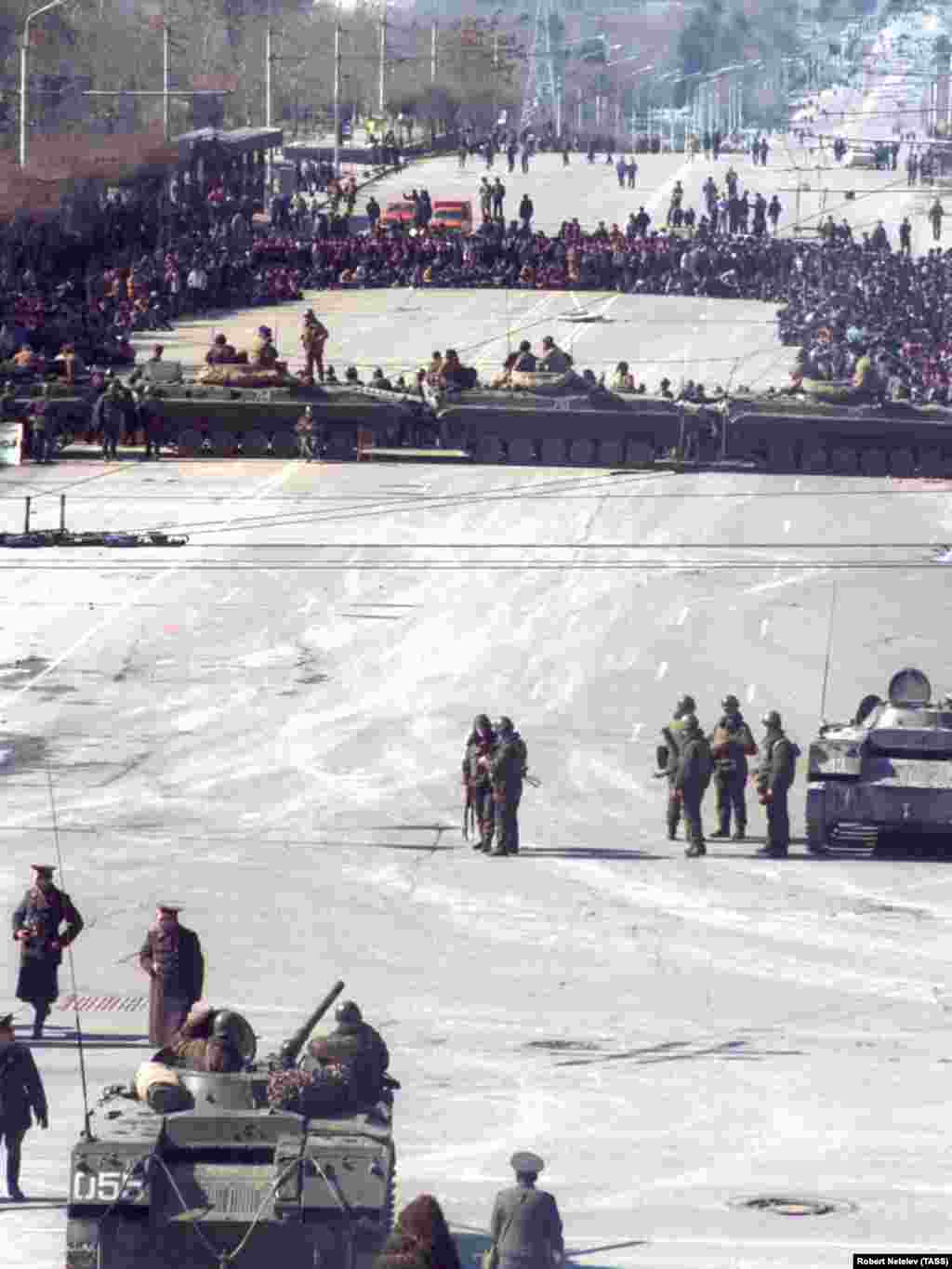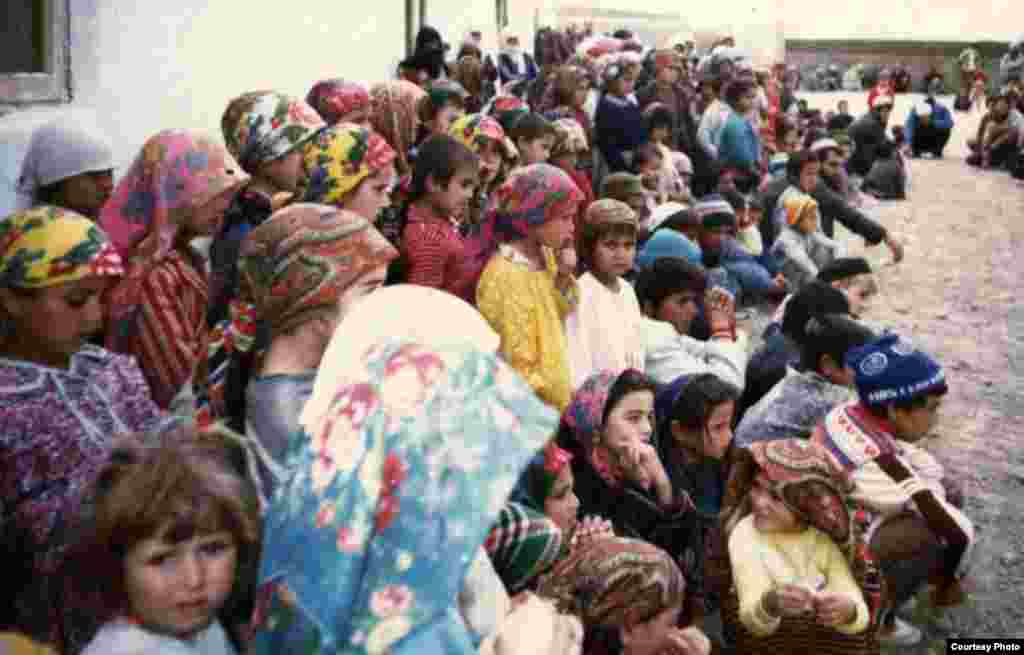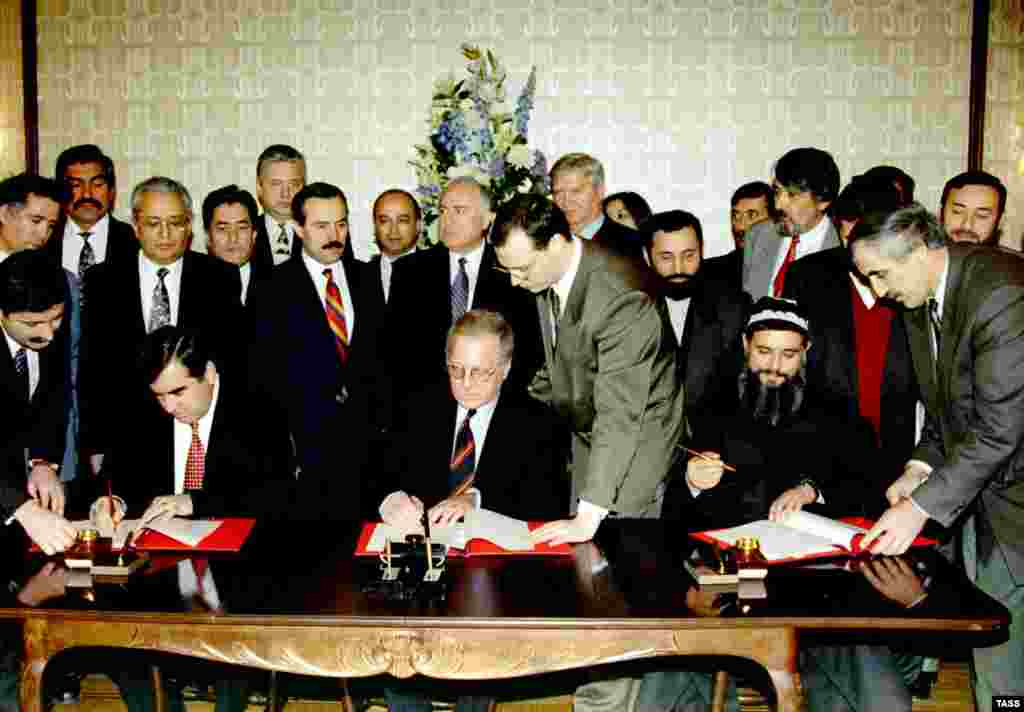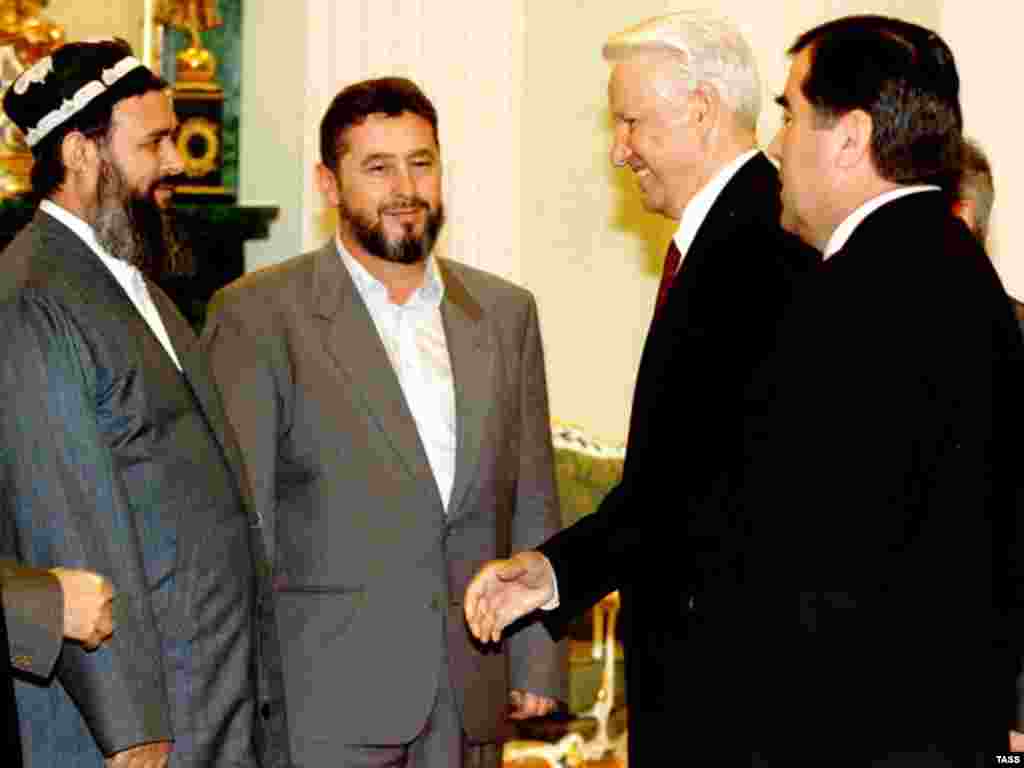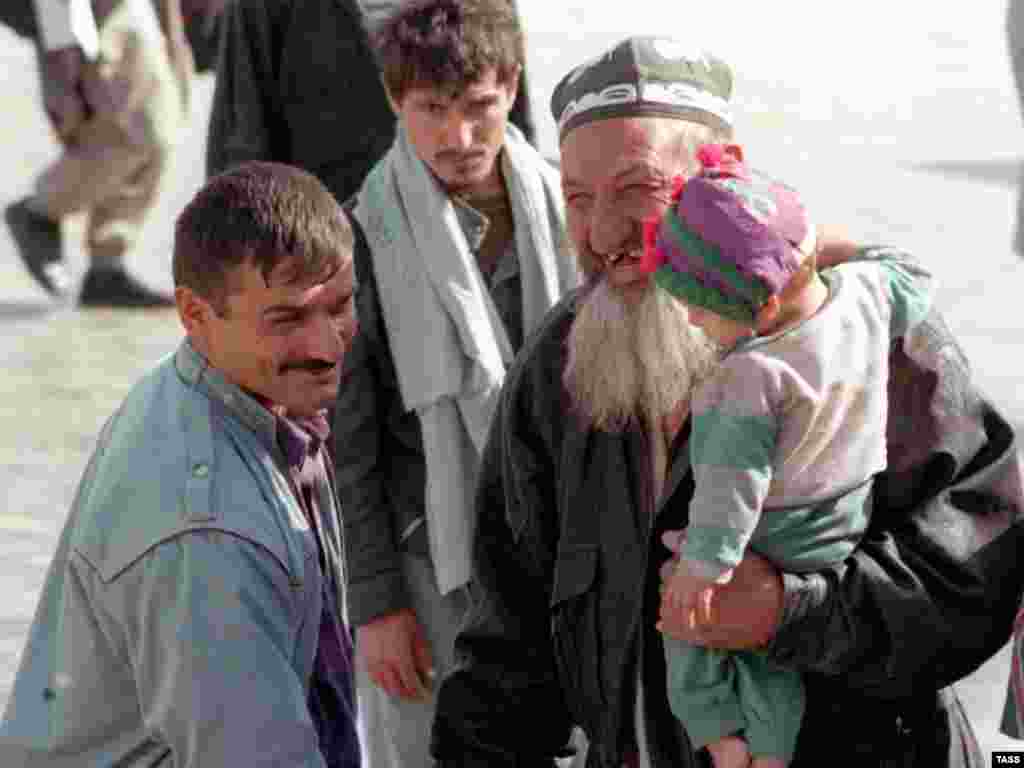June 27 marked the 24th anniversary of the signing of the UN-brokered Tajik Peace Accord that ended a five-year civil war between Tajikistan's secular government and a coalition of opposition groups led by Islamic forces.
This year, the Tajik government did not hold any public events to celebrate National Unity Day, which commemorates the signing of the peace accord. The five-year civil war that ended in 1997 led to the deaths of more than 150,000 people and saw over one-tenth of the Tajik population flee the country.
The peace accord included a political settlement that would give 30 percent of government positions to representatives of the United Tajik Opposition. However, Tajikistan has since banned the Islamic Renaissance Party that was officially registered during the peace process.
In 2015, Tajikistan’s Supreme Court declared the party to be a “terrorist” organization and jailed several high-ranking party officials on terrorism-related charges. Tajikistan's economy has never really recovered from the civil war, and poverty is widespread. Almost half of the country's GDP is earned by migrants working abroad, especially in Russia.
Tajik President Emomali Rahmon has been ruling the Central Asian nation since 1992 and is widely criticized for suppressing dissent and for widespread corruption in government agencies.
This gallery shows the rise of political tensions, the victims of the conflict, and the push for peace.
